Giving back: Health care students serve across the community
Ohio State students staff free clinics, offer free health screenings and medical care as they prepare for jobs in health care.
Conner Dewey remembers the moment one of his patients put on a pair of glasses for the first time.
His vision had been so poor, he didn’t drive. Highway signs, street signs, they were all so hard to see that he could never pass the test to get a license.
Dewey tested his eyes and fitted him with glasses. Seeing through them, the man burst into song. In Spanish.
“His wife said it was a song giving thanks,” Dewey says. “It was really special.”
Over the months that Dewey volunteered as an optometry graduate student at two Columbus medical clinics, he felt like he helped some of the very people who needed it most. Parents told him their child could see the board for the first time. They could read their books without struggling. Others learned for the first time they had cataracts.
“For a lot of patients, this was their first eye exam. They might have been getting by, not knowing what they were missing.”Conner Dewey, a fourth-year graduate student at The Ohio State University College of Optometry
Those experiences happen throughout the school year. In clinics and organizations, Ohio State health sciences students volunteer as they prepare to become health care providers. They test blood pressure and hearing, perform mammograms and dental exams, seek out low-cost medications for their patients and give advice for preventing strokes, diabetes and other chronic diseases.
In giving, students also receive. They sharpen their skills and learn what factors can keep their future patients from being healthy: low income, no health insurance, limited English, homelessness.
“Sometimes we just assume we all have the care that we need,” Dewey says.
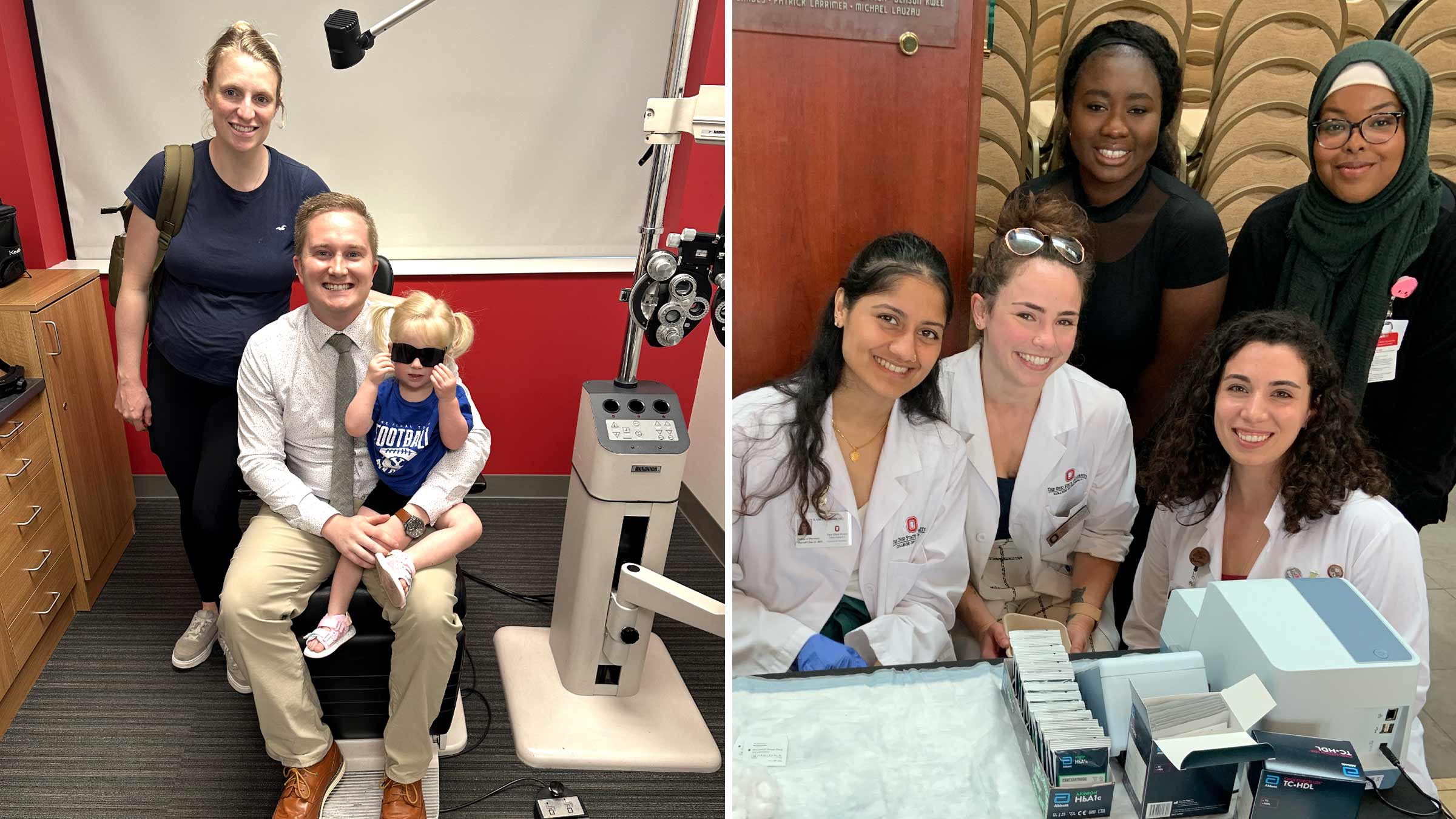
Right: The chance to work with people with limited access to health care is the reason Amaal Ahmed (back row, right) chose pharmacy as a career.
Beyond giving out medication
When you think about having your blood pressure or your blood glucose levels tested, you might not think of going to a pharmacist. But the role of pharmacists has widened to include giving out medication and giving shots as well as doing health screenings to prevent or manage chronic illnesses.
As a third-year student at the Ohio State College of Pharmacy, Amaal Ahmed volunteers annually at Columbus’ African American Male Wellness Walk, and UpLift Her, an event for Black women.
“There were a lot of people at the events who didn’t regularly see their doctor or regularly get their numbers checked or were unaware of what the numbers meant,” Ahmed says. “I felt like the work we were doing made a difference.”
The chance to coach and advocate for people in underserved communities is what led Ahmed to become a pharmacist.
“And as the roles of pharmacists expand to include health screenings, there’s more ways we can help people.”
Supporting patients’ health and basic needs
In a class teaching nursing students about health equity and justice, students in the Ohio State College of Nursing offer free wellness screenings while learning about the needs of various communities.
Their work might take them to a health fair, a senior living community, school, food pantry or another site.
“I challenge my students to advocate for their patients not only for their medical treatment but also for other needs their patients might have as well.”Sarah Rust-Overman, DNP, MSN, APRN-CNP, a clinical assistant professor of practice
The goal is for students to identify and help with some of the hurdles people might face to being healthy. Before offering a free screening at a health fair, senior living community, or school, students are encouraged to know some of the resources in the area. That way, they can direct patients to food pantries, low-cost or free medical clinics, or support finding a job.
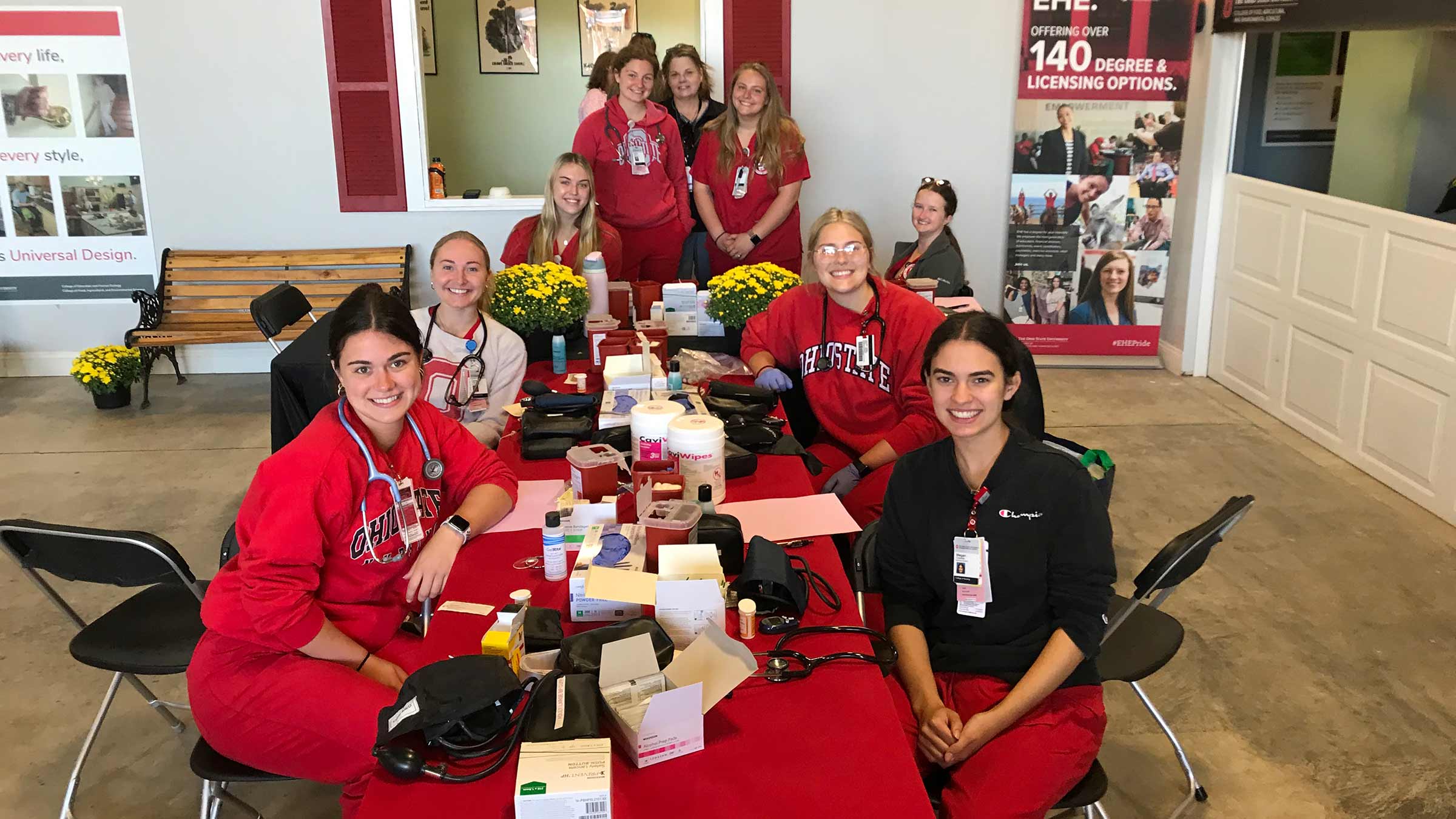
“They’re going to encounter patients who need support,” Dr. Rust-Overman says. “Instead of relying on others to provide that, the students can connect their patients with resources that could improve their health.”
Offering practice in reading
Growing up, Kaitlyn Held often did community service work through her church.
When she came to college, she didn’t seem to have much time to do it.
“I kind of missed those connections,” says Held, now a college senior in the School of Health and Rehabilitation Sciences. The school prepares students to work in fields such as respiratory therapy, athletic training and health care administration and is within the Ohio State College of Medicine.
Held was excited to take an elective that would give her a chance to get back into volunteering. In fact, the course required it.
Everyone in the class could choose from among many volunteer opportunities with a local nonprofit organization. Held chose The Down Syndrome Association of Central Ohio. She and four other students brainstormed events they could put on to improve reading skills for recent high school graduates with Down syndrome.
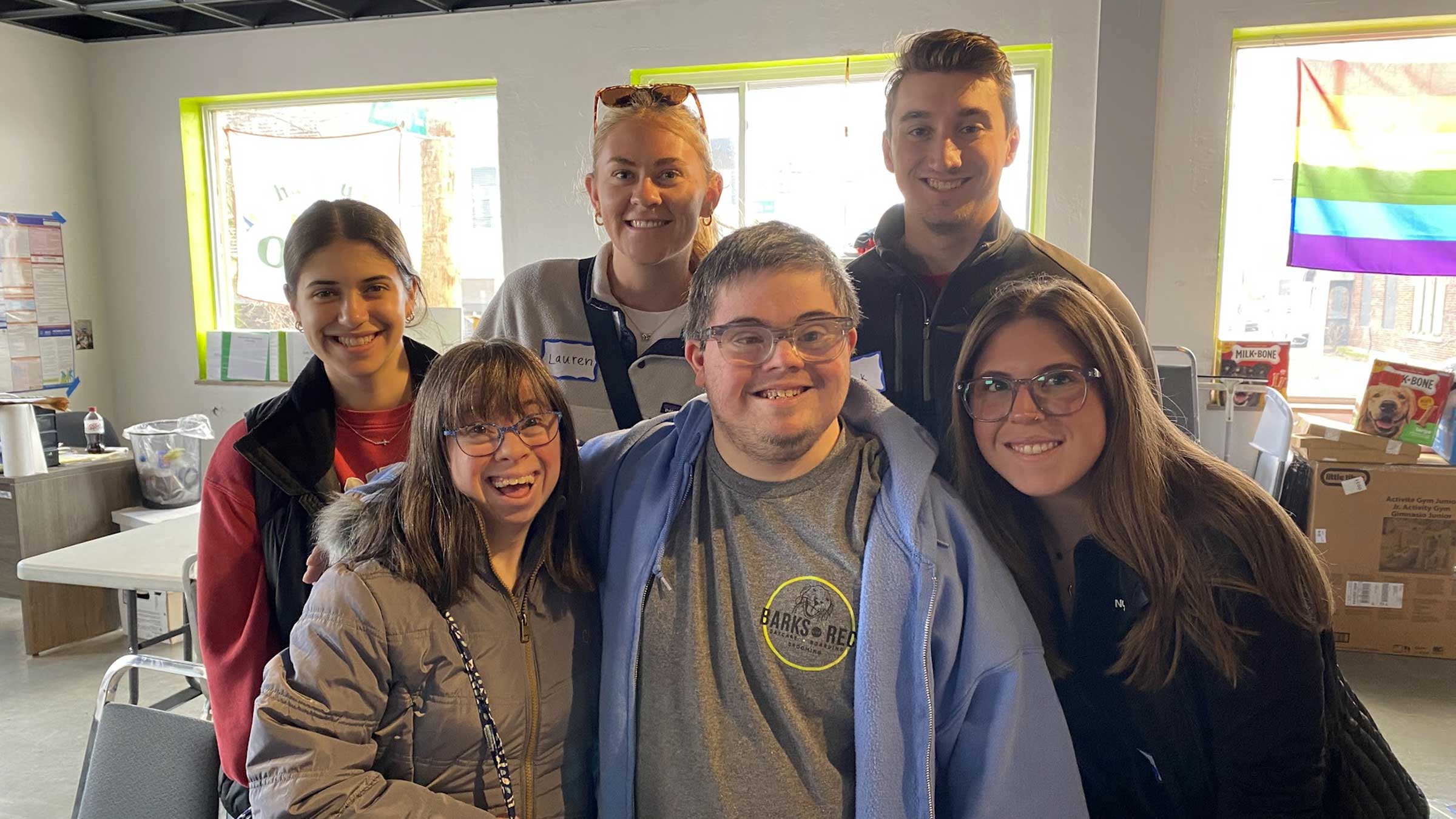
They came up with two. One was a chance for people to read out loud to dogs, a low-stakes environment in which they would not be corrected if they mispronounced a word or took a while to finish a page. The students also organized a karaoke night.
“We thought we were doing this event for them,” Held says. “But everyone was cheering for us as we sang too.”
Getting in the habit of service work
With so few Ohio dentists accepting Medicaid or offering a sliding scale for services, the work of graduate dental students from Ohio State’s College of Dentistry allows more people to be treated across the state.
Before graduating, each student is required to serve for 40 days at their choice of 26 community dental clinics in the state. They do fillings and crowns, root canals and implants among other procedures.
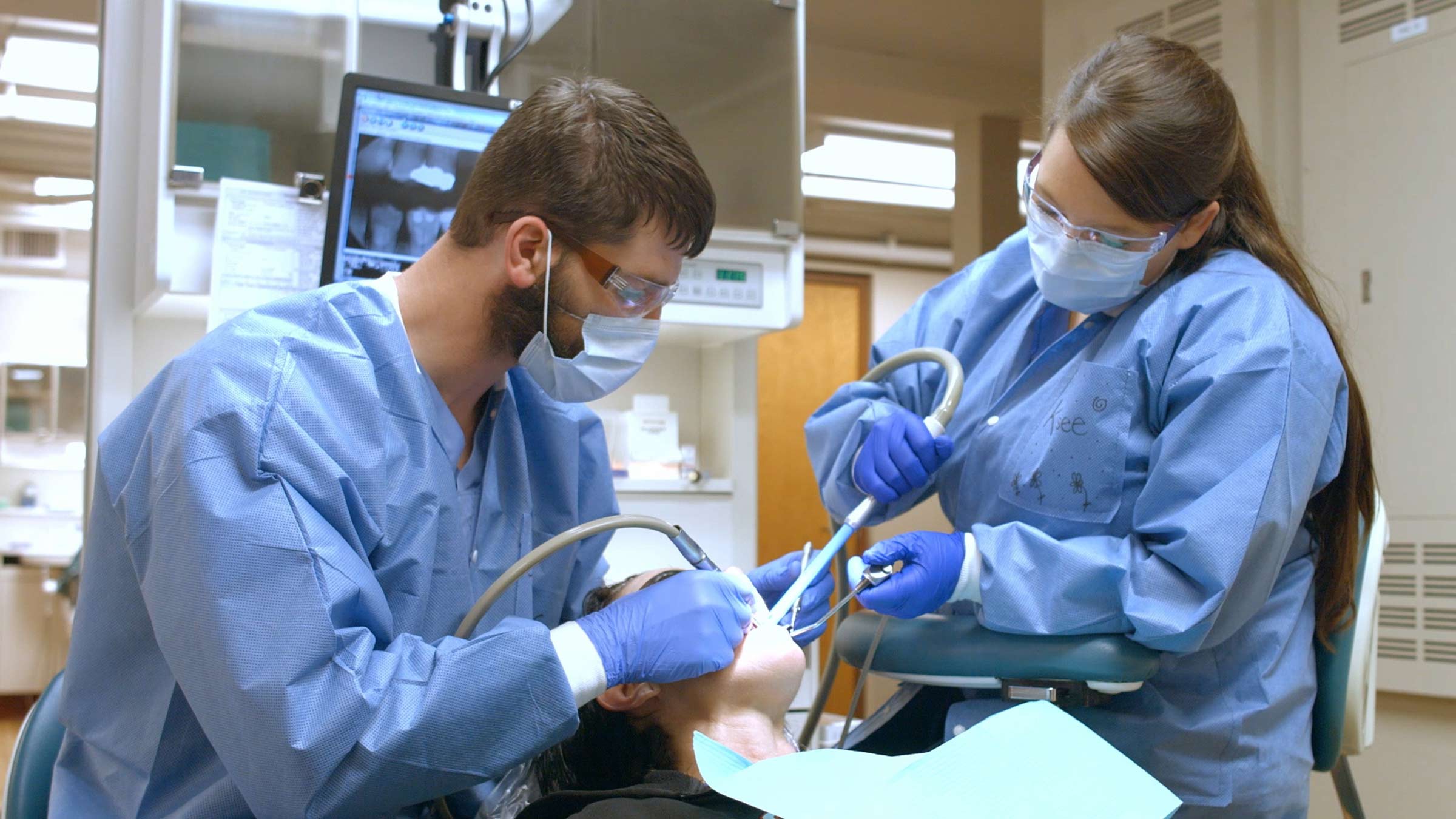
“This experience often motivates students to include volunteering throughout their careers,” says James Cottle, DDS, an assistant clinical professor who directs the community outreach program. “They see the bigger picture and choose to use their skills to help others.”
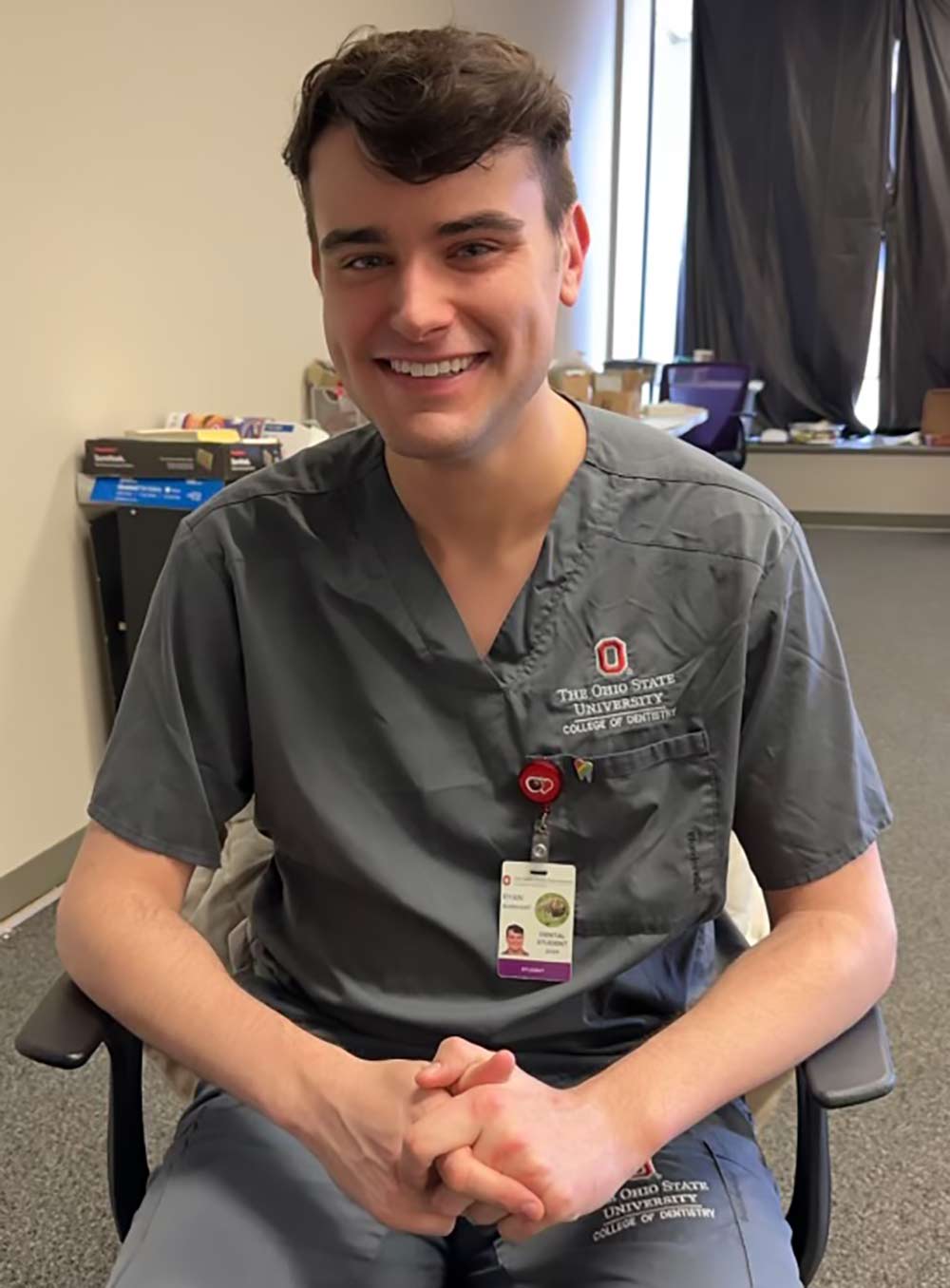 In his last year at the college, Ryan Burkhart was eager to begin his service work.
In his last year at the college, Ryan Burkhart was eager to begin his service work.
As the son of two teachers, it’s probably not surprising that Burkhart has a knack for teaching. His work gave him more chances to do that, coaching people on how to take care of their teeth and convincing them that their teeth can affect their overall health.
Burkhart recalls one patient he worked with who had several broken and infected teeth and pain throughout her mouth. X-rays indicated she would need to have all her teeth replaced with dentures. She was 29.
When she returned to the office for a cleaning, Burkhart realized how many of her teeth could possibly be saved instead of replaced. He suggested some ways she could take better care of her teeth.
“After I coached her on hygiene, she was determined to save the teeth she could.”
Medicine’s future in the hands of many interested in equity
During her first year in medical school at Ohio State’s College of Medicine, Mary Charleton began working at the Columbus Free Clinic.
She didn’t realize then how much the student-run medical practice would broaden her thoughts on medicine and widen her career interests to include both internal and emergency medicine.
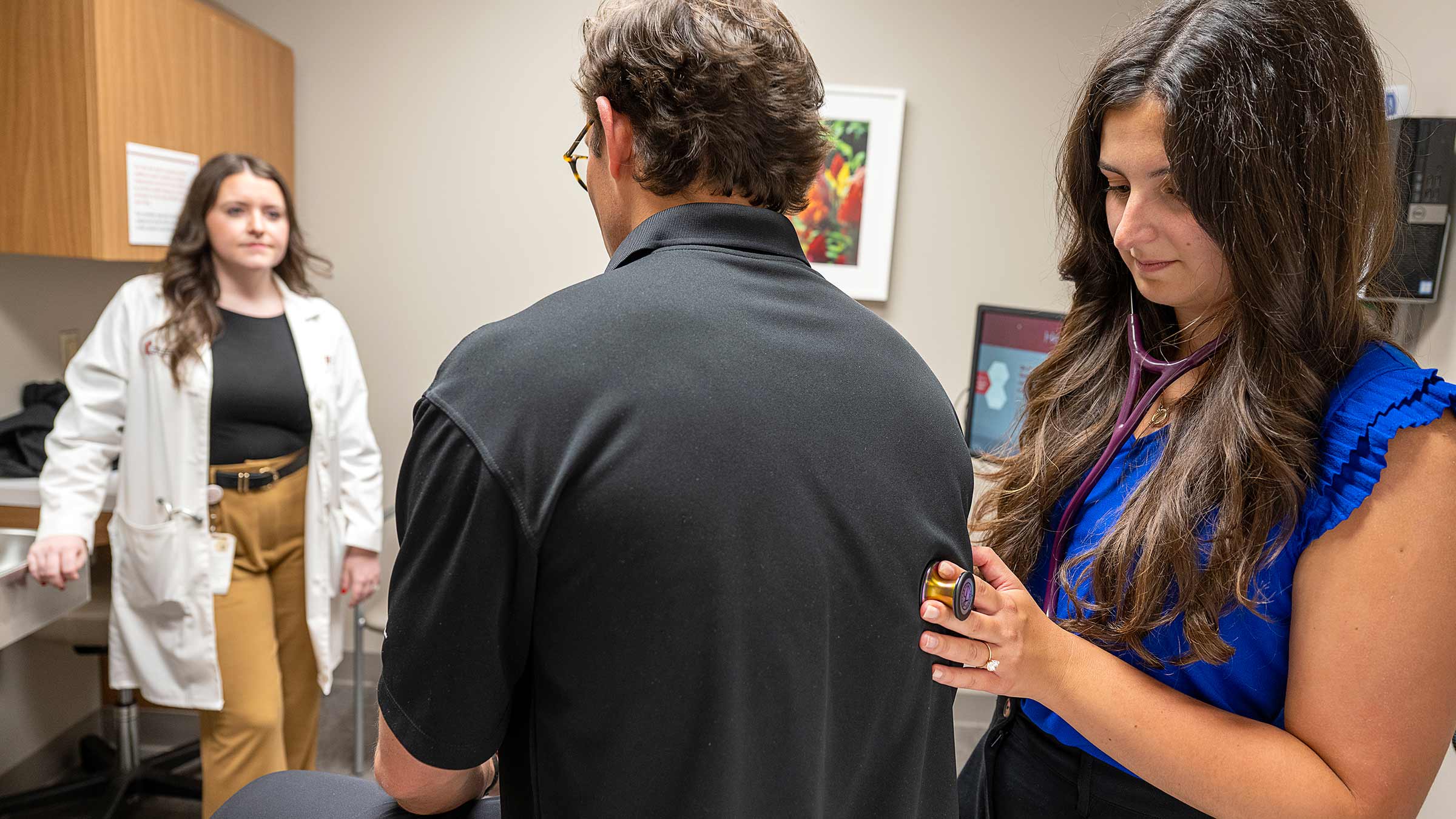
Charleton helped launch a women’s health screening event, offering Pap smears, breast exams, and tests for sexually transmitted infections, cholesterol and blood glucose levels. From those tests, some patients learned they had cancer. It was shocking news but also a chance to be treated early on for the cancer, which may have otherwise gone undetected.
“I think we saved a few lives,” Charleton says.
Working at the Columbus Free Clinic with future nurse practitioners and physicians made Charleton realize how many people share her passion that a healthy life shouldn’t just be for those who can afford prevention and treatment.
“It gives me optimism,” she says, “about where medicine is headed in the future.”





